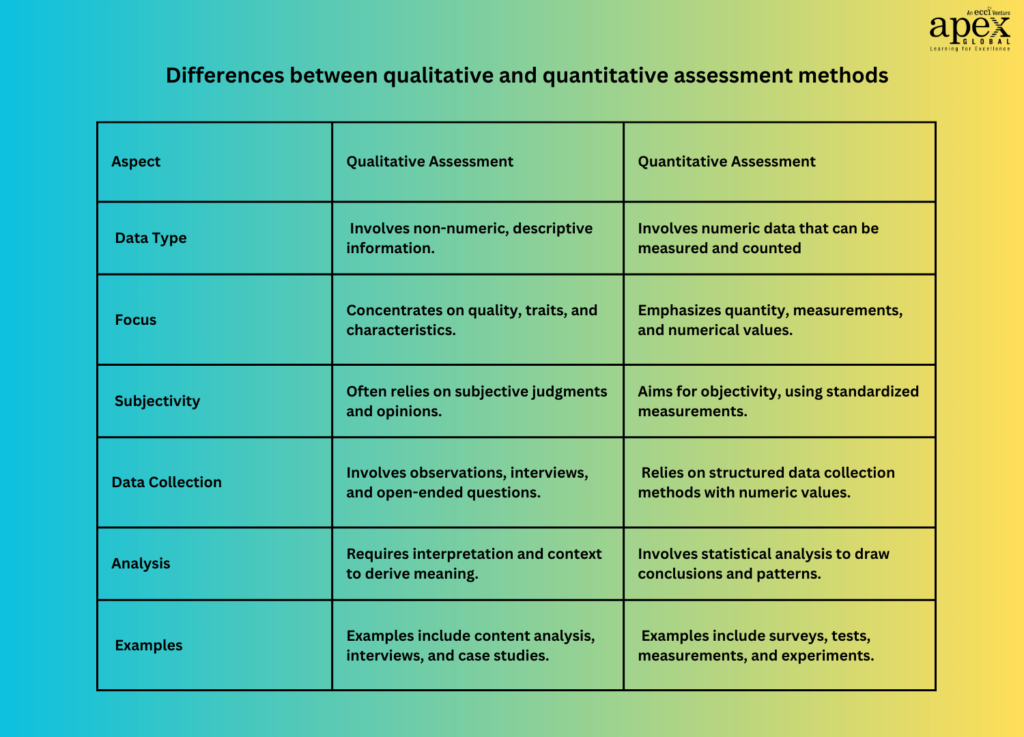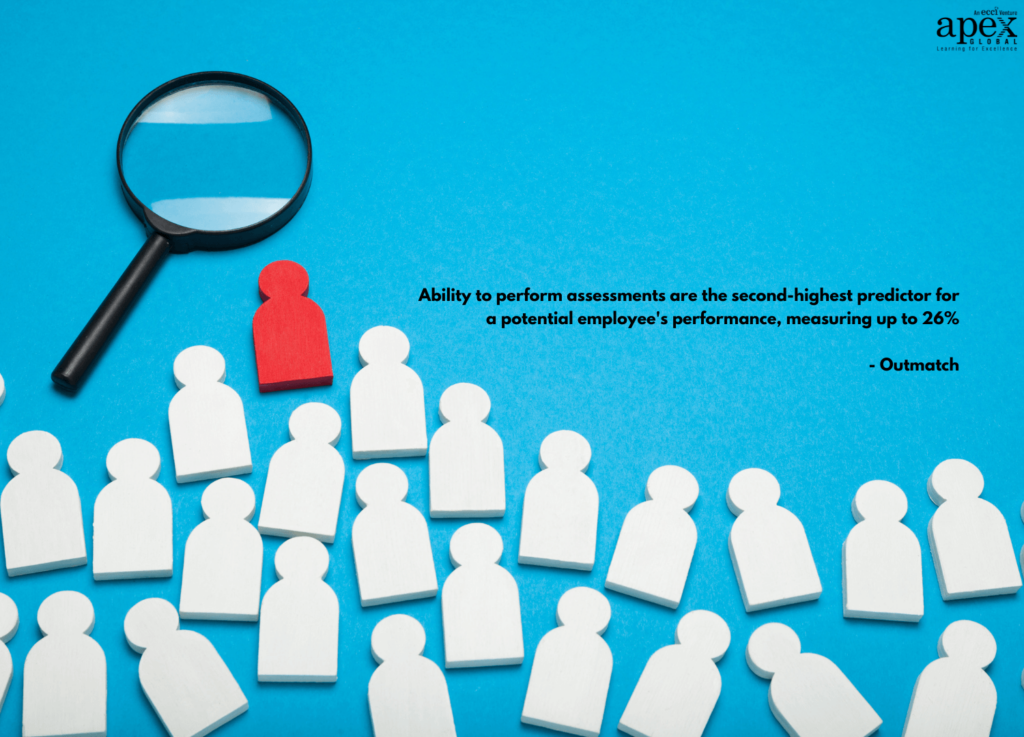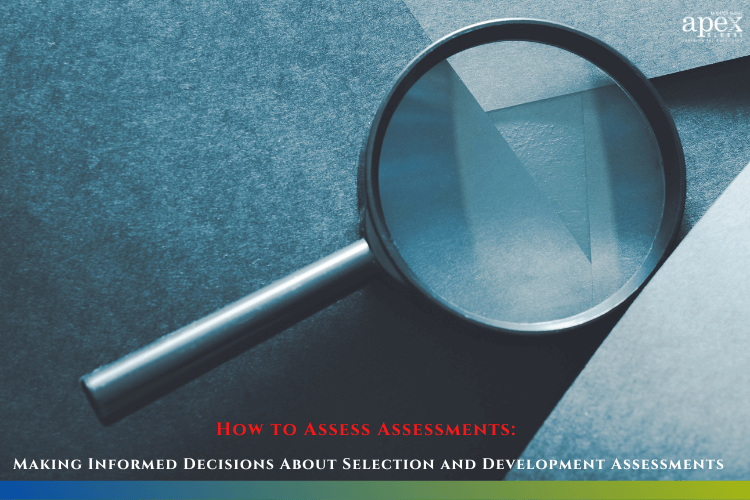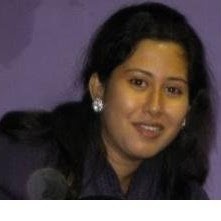“It doesn’t matter which side of the fence you get off on sometimes. What matters most is getting off. You cannot make progress without making decisions.” – Jim Rohn
Life is a series of choices, and the decisions we make shape our future. Whether it’s choosing a career path, selecting the right candidate for a job, or evaluating the effectiveness of a development program, decision-making plays a crucial role in our personal and professional lives. In the context of selection and development assessments, making informed decisions is essential for identifying the right candidates, nurturing their growth, and ultimately driving organizational success.
Assessments are tools that help us gather information, evaluate options, and make decisions. They provide valuable insights into a candidate’s skills, knowledge, and potential, allowing us to make more informed choices. However, not all assessments are created equal, and understanding how to assess assessments is key to making effective decisions.
In this article, we will explore the importance of making informed decisions about selection and development assessments. We will discuss the different types of assessments, their benefits and limitations, and provide practical tips for evaluating and choosing the right assessments for your organization. So, let’s dive in and learn how to assess assessments for better decision-making and ultimately, better outcomes.
What you'll find in this article [hide]
Qualitative and Quantitative Assessment Methods
When it comes to assessments, there are two main types: qualitative and quantitative. Qualitative assessments provide a more in-depth understanding of a situation or phenomenon, while quantitative assessments provide numerical data that can be analyzed statistically. Both types of assessments have their benefits and limitations, and choosing the right one depends on the purpose of the assessment and the data needed to make informed decisions.
Let’s start by exploring the differences between qualitative and quantitative assessment methods. We will discuss the benefits and limitations of each method, provide examples of when to use each method, and offer practical tips for analyzing and interpreting the data.

Qualitative and quantitative assessment methods are two distinct approaches to gathering and analyzing data. While qualitative methods provide a more in-depth understanding of a situation or phenomenon, quantitative methods provide numerical data that can be analyzed statistically. Both methods have their benefits and limitations, and it’s essential to gather and analyze both types of data to assess workplace strengths and areas for improvement.
Qualitative methods, such as observation and expert consultations, can be useful for describing a situation and providing insight for intervention approaches. On the other hand, quantitative methods are useful in that they often take less time to administer than qualitative methods and may produce clearer, more objective results.
Selection Assessment Methods
When it comes to selecting the right candidate for a job, it’s essential to use formal assessments to build a high-quality workforce. Formal assessments are structured and standardized methods of evaluating a candidate’s skills, knowledge, and potential. However, not all formal assessments are created equal, and it’s important to evaluate the assessment methods to ensure they align with the organization’s goals and values.

Here are some important criteria to consider when evaluating assessment methods:
- Job-relatedness: The assessment should measure the knowledge, skills, and abilities required for the job.
- Validity: The assessment should measure what it’s intended to measure.
- Reliability: The assessment should produce consistent results over time.
- Fairness: The assessment should be free from bias and discrimination.
- Accessibility: The assessment should be accessible to all candidates and employees.
When selecting an assessment, it’s important to make rational choices based on the organization’s goals and values. Here are some tips for making rational choices:
- Identify the purpose of the assessment.
- Determine the type of assessment needed.
- Evaluate the assessment’s validity and reliability.
- Consider the cost and time required for the assessment.
- Seek expert advice when unsure about which assessment to use.
Examples of formal assessments to build a high-quality workforce include cognitive ability tests, personality tests, and situational judgment tests. By using formal assessments, organizations can make informed decisions about selecting the right candidate for the job and building a high-quality workforce.
Assessments are an essential tool for evaluating candidates and employees in the workplace. According to LinkedIn’s 2021 Workplace Learning Report, only 30% of learning and development (L&D) professionals indicate that they leverage assessments during training. However, assessments are critical for identifying knowledge and skills gaps and delivering learning programs that drive business results. Here are some tips for assessing assessments:
a. Determine the purpose of the assessment
Before selecting an assessment, it’s important to determine what you want to achieve. According to Training Industry, assessments can predict outcomes like job performance, turnover, and leadership potential. Are you looking to evaluate a candidate’s skills and abilities, or are you looking to identify areas for development in an employee? Once you have a clear understanding of your goals, you can select an assessment that aligns with those goals.
b. Evaluate the validity and reliability of the assessment
Validity and reliability are two important factors to consider when evaluating an assessment. Validity refers to whether the assessment measures what it’s intended to measure, while reliability refers to the consistency of the assessment results. Look for assessments that have been validated and have a high level of reliability. According to Training Industry, choosing an assessment that appears to measure a construct without confirming job-relatedness, reliability, and validity would be like taking a pill just because it looks like medicine.
c. Consider the cost and time required for the assessment
Assessments can be costly and time-consuming, so it’s important to consider these factors when selecting an assessment. Look for assessments that are cost-effective and efficient, while still providing valuable insights. According to Training Industry, the most important metrics for assessments are cost savings, employee performance, and employee engagement.
d. Evaluate the ease of use and accessibility of the assessment
Assessments should be easy to use and accessible to all candidates and employees. Look for assessments that are user-friendly and can be completed online or in-person. Skills assessments can help your organization identify top candidates and develop existing talent with the skills they need to succeed.

e. Seek expert advice
If you’re unsure about which assessment to use, seek advice from experts in the field. HR professionals, recruiters, and assessment providers can provide valuable insights and recommendations. There are brilliant people creating assessments that can predict outcomes like job performance, turnover, and leadership potential. You don’t have to go too deep into the science to use them appropriately and make better decisions about talent.
By following these tips, you can make informed decisions about selection and development assessments, and ensure that you’re using the right tools to evaluate candidates and employees in the workplace. Remember to focus on objective, quantifiable metrics, use a variety of assessment methods, and recognize good performance to motivate learners to excel.
Curious about how your assessments measure up? Want to make sure you’re choosing the right tools for your needs? Apex Global Learning has you covered.
Now that you’ve gained insights into the intricacies of assessing assessments, it’s time to put your knowledge into action. Head over to Apex Global Learning’s assessments page to explore a world of possibilities for improving your assessment strategies.
Don’t miss out on the chance to elevate your assessment game and make data-driven decisions with confidence. It’s time to seize the opportunity and level up your assessment journey!


